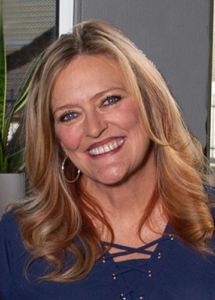
Dr. Sorrenson, right (as you are looking at the photo) with her practice’s associate optometrist, Jen Catalasan, OD, who joined the practice in July 2017. Dr. Sorrenson says that carefully planning how an associate will be incorporated into the practice, and then tracking their performance, makes the success of a new associate more likely.
Implementing a plan to help new associate ODs succeed.
By Laurie Sorrenson, OD, FAAO
Nov. 8, 2023
Hiring an associate doctor can be a pivotal moment in the growth and success of an optometric practice. However, it’s not as simple as bringing someone new on board and expecting them to seamlessly integrate into your team and start serving patients.
Creating a calendar and a checklist of items to review with the associate is vital. Do this BEFORE they arrive for their first day of work! LOL! That’s pretty important!
Consider Letting Your Associate Doctor Bring in a New Specialty
One strategy that can significantly enhance your associate doctor’s success is to consider the incorporation of a specialty practice like dry eye, vision therapy or neurovisual medicine. Six years ago, I hired three doctors at the same time! Yikes! I was worried that we would not be able to fill their schedules, and since we pay on a percentage of receipts… that could be a problem. Before one of our associate doctors even started at our office, she went up to Michigan to be trained in neurovisual medicine. This proactive approach helped her hit the ground running and got her appointment book filled more quickly.
Metrics Tracking
Another piece I think is really important for onboarding a new associate is the tracking of performance metrics. This is crucial for both the practice and the associate doctor’s success. We created a Google spreadsheet where the associate doctor can input their own metrics. We review all the doctors’ metrics once a month during our weekly doctor meeting.
Other Articles to Explore
Key metrics we track include receipts/full exam, production/full exam, annual contact lens supply percentage, medical receipts/full exam, receipts per clinical hour worked and production per clinical hour worked.
These metrics provide insights into the associate doctor’s performance and can help identify areas for improvement. I personally think that the two metrics, receipts/clinical hour and receipts/full exam, are our two most important. There could be different metrics that are more important in your office.
Mentorship and Guidance
I believe it is essential to offer support, mentorship and guidance to your newly hired associate doctor, especially during their initial days in the practice. Here are some suggestions:
- Daily Meetings: Schedule daily meetings with the associate doctor during their first week or so. Review patient charts, billing procedures and any questions or concerns they may have. These frequent interactions provide an opportunity to address issues promptly and help the associate doctor acclimate to the practice. These interactions can happen at lunch or at the end of the day.
- Shadowing and Observation: Some owner doctors choose to have the new associate doctor shadow them or even watch the associate doctor perform exams for a day. This hands-on experience allows the new doctor to gain valuable insights, tips and techniques from an experienced colleague.
- Staff Engagement: Encourage the associate doctor to perform exams on staff members. This not only helps the staff become familiar with the new doctor’s approach, but also makes it easier for the staff to confidently recommend the new doctor to patients. Staff endorsement can be a powerful marketing tool.
Regular Meetings and Collaboration
To foster a culture of teamwork and continuous improvement, establish a regular meeting schedule for all the doctors in your practice. We meet during lunch one day a week. This provides education and direction, but also social time to get to know each other better. During these meetings, you can discuss different topics, such as:
- Staff Recognition: Share shout-outs to staff for their outstanding efforts and contributions. Acknowledging and appreciating your team’s hard work can boost morale and create a positive work environment. This makes the doctor and the staff feel good!
- Training Needs: Identify areas where staff may require additional training or support. Addressing these needs promptly can lead to improved patient care and practice efficiency. I also think asking these questions and acting on them quickly lets the doctor know we value their opinion and input.
- Metric Review: On a monthly basis, we review the metrics tracked by the associate doctor. We might discuss areas for improvement or identify where they are doing well. Because we have multiple doctors in our practice, we can get advice from the doctors who have the best metrics. This data-driven approach can guide both individual and practice-wide success.
- Billing, Coding, and Efficiency: Regularly discuss billing and coding procedures. I try to have a billing and coding tip at every doctor meeting. We also discuss how we can be more efficient.
Conclusion
Hiring an associate doctor is just the first step in expanding and improving your optometric practice. Making this transition successful requires planning, a little patience and intentionality.
By providing lots of guidance and coaching, possibly incorporating specialty practices, and maintaining open lines of communication, you can set the stage for a fantastic and profitable partnership that benefits your practice, your patients and your newly hired associate doctor.
You just can’t do too much when it comes to preparing and planning to bring the associate doctor into your practice. We have nine doctors in our practice, and each one has created value and made our work environment even better.
 Laurie Sorrenson, OD, FAAO, is president of Lakeline Vision Source in Cedar Park, Texas, and the Professional Editor of Review of Optometric Business (ROB). To contact her: lsorrenson@gmail.com.
Laurie Sorrenson, OD, FAAO, is president of Lakeline Vision Source in Cedar Park, Texas, and the Professional Editor of Review of Optometric Business (ROB). To contact her: lsorrenson@gmail.com.



























